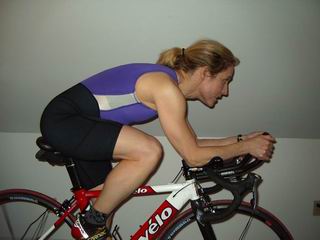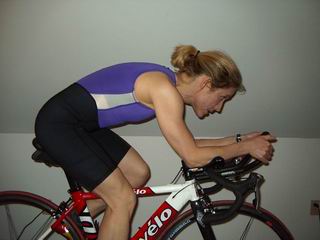"Cycling: What a pain in the neck!"
Neck pain is one if the most common complaints in the cycling community, with many cyclists believing it is an acceptable and expected problem. The natural curve of the neck (cervical lordosis) is placed in a very un-natural position the instant we sit on a bike. Road bikes place the neck in an even greater degree of extension due to the low and aerodynamic position, with some aggressive setups requiring full extension of the cervical spine.
Any joint in the human body does not enjoy being in an extreme range of motion; simply hold your elbow in a fully flexed position for as long as you can. This simple experiment quickly demonstrates the muscle and joint fatigue that develops in a short space of time, yet many cyclists will spend hour upon hour in a similar position with their necks.
We as cyclists have all experienced the stiff, sore, tired and often aching neck after stepping off our bikes following a long ride. But is this normal, and is it acceptable? The answer is no. Cycling should be comfortable and enjoyable, and if neck pain is limiting your experience then something should be done.
The common complaint is an aching neck, associated with a sustained cycling position, but alleviated with cessation of cycling. This mild neck pain is usually non-serious and is a result of poor posture, position on the bike or simply adapting to a new posture. These cases respond quickly to some minor adjustments and exercises, but if left untreated, can develop into more chronic conditions, including disc prolapse, facet joint impingement, chronic muscle shortening, headaches and loss of movement.
A relevant study by Jacobs et.al examined the relationship of neck extensor muscle strength (muscles that hold the head up) and neck pain in cyclists. The results showed no significant difference in muscle strength between cyclists and non-cyclists, indicating no adaptation in the cyclists, despite spending many hours in an extended position. Furthermore, there was no significant difference in strength between those that experienced neck pain and those that did not. The conclusion of this study was that neck pain may be due to fatigue from the sustained neck position, rather than from muscle weakness.
So what can you do to avoid or alleviate the neck pain?
- Correct bike setup
- A more upright position allows the neck to be closer to neutral and hence more comfortable. Try a shorter stem length and a more upward stem angle.
- The lower and more "stretched-out" the position, the more the neck extends to see the road ahead.
- Mountain bikes and hybrids tend to be more upright, placing less strain on the neck. Consider these if comfort is of high importance. Speak to your local bike store to ensure your bicycle matches your needs.
- If you are only interested in racing, then aerodynamics must play a more important role and hence you will require a lower, "aggressive" position.
- Change position regularly
- Maintaining a fixed position with the hands can lead to muscle fatigue and subsequent tension in the muscles surrounding the neck.
- Regularly change your hand position on the bars.
- Try to look through the tops of your glasses, allowing the head to be in a more neutral position.
- Relax the shoulders, especially when you feel them creeping up towards your ears. Pull the shoulder blades back and down.
- On a safe section of road or trail, take the time to look up, down and to each side to stretch the spine and muscles.
- Exercises
- Stretch the muscles of the neck and shoulders regularly
- Chin tucks - move your head directly backwards, making a double chin. This should be repeated on a daily basis and can be done on and off the bike.
- Gently turn the head side to side, down towards your chest and backwards through full range of movement.
- Training
- Slowly increase the cycling time to allow the neck to adjust to the required cycling position and muscular demands.
Whilst neck pain is common amongst cyclists, it can be alleviated with some simple adjustments and basic exercises. If you continue to experience neck pain despite following the tips above, don't hesitate to see your physiotherapist or cycling specialist.


Incorrect (Left) and Correct (Right) neck position.
References:
Can J Appl Physiol. 1995 Jun;20(2):230-9, Isometric cervical extension strength of recreational and experienced cyclists. Jacobs K, Nichols J, Holmes B, Buono M.
About the Author..
Andrew is currently living in Ottawa, Canada training for cross country skiing with XCOttaw.ca and working as a physiotherapist. He has worked in orthopaedics and private practice in Melbourne, Australia since graduating in 2001. He is currently practicing at ProPhysio Plus in Barrhaven and runs a specialist bike setup service called Physio-Fitt. He is a four time and current member of the Australian Ski Team and is an active road and mountain bike rider.
This article first appeared in Bicycle Victoria Magazine, Australia.


